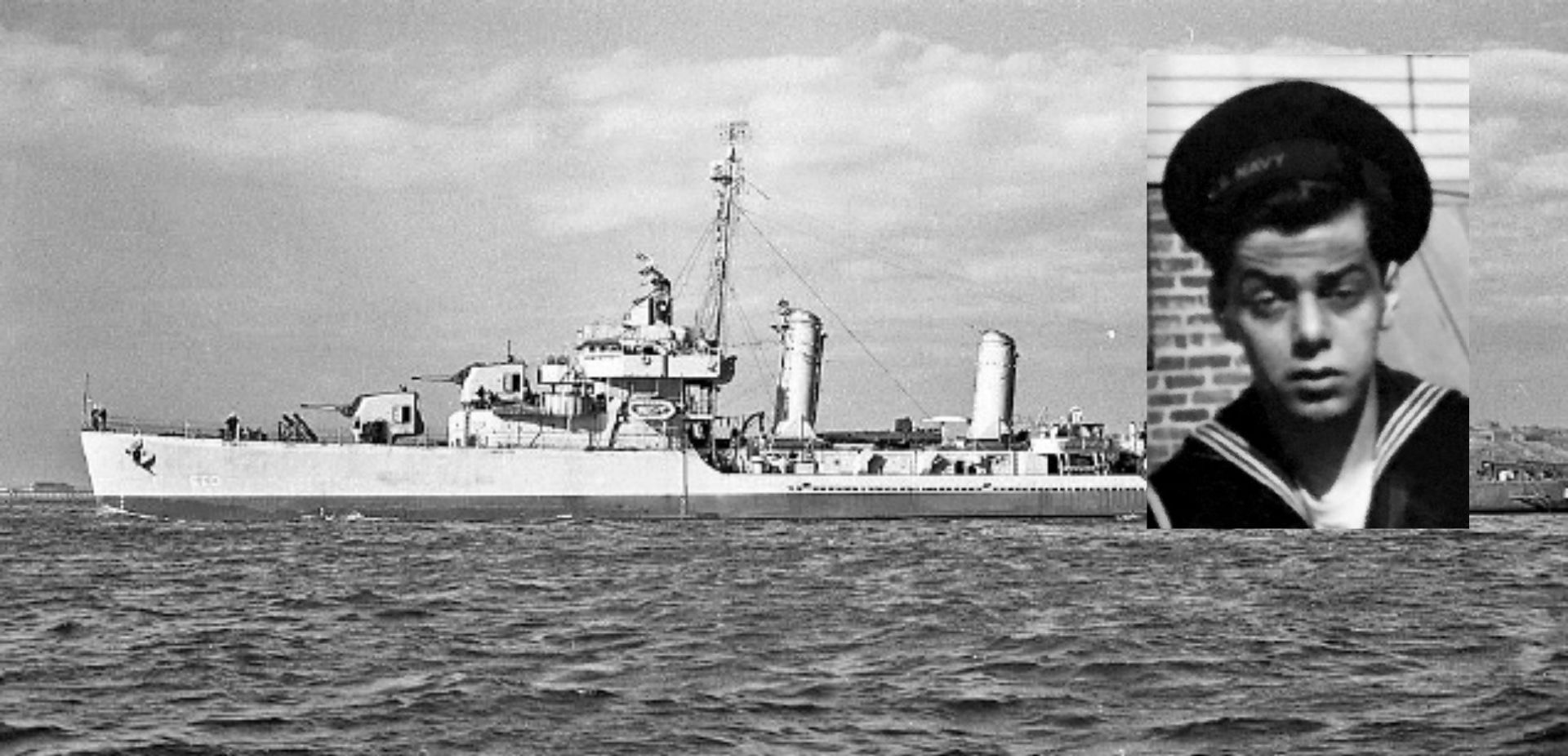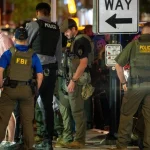History has a way of leaving behind unanswered questions, especially during times of war when chaos and tragedy overshadow individual stories. For decades, countless American families who lost loved ones during World War II lived with uncertainty, not knowing what became of the young men who went off to fight. Recently, however, science, determination, and the resilience of remembrance have brought closure to one such story. The remains of a teenage U.S. Navy sailor, lost in a devastating ship explosion more than 80 years ago, have finally been identified. His story not only highlights the sacrifices made by young servicemen during WWII but also demonstrates how modern technology and persistent efforts can bridge the gap between past and present.
- The Forgotten Sacrifice of a Teen Sailor
- The Ship Explosion That Claimed Hundreds
- Modern Science Brings Closure
- Family Reactions and Emotional Closure
- The Broader Mission to Identify the Missing
- Historical Context of Teen Soldiers in WWII
- Expert Reflections on the Importance of Identification
- The Symbolism of Remembering After 80 Years
- Looking Ahead: Continuing the Mission
- FAQs
- Who was the WWII teen sailor whose remains were identified?
- How were the remains identified after so many years?
- How many World War II service members are still unaccounted for?
- Why is it important to identify soldiers after so many decades?
- What happens after a soldier’s remains are identified?
- Conclusion
The Forgotten Sacrifice of a Teen Sailor
When World War II broke out, America saw a surge of young men, many still in their teens, enlist to serve their country. Some lied about their age to join earlier, driven by a sense of patriotism, adventure, or duty. Among them was the sailor whose remains have just been identified. Barely out of adolescence, he had left behind family, friends, and the innocence of youth to join the fight against fascism.
In the midst of the global conflict, naval warfare proved especially perilous. The Pacific and Atlantic oceans became battlegrounds where submarines, mines, and aerial bombardments claimed countless vessels. The young sailor in question served aboard a Navy ship that would ultimately meet a catastrophic fate. In a violent explosion at sea, the ship was torn apart, killing hundreds in a matter of minutes. While many bodies were recovered, a large number remained unidentified due to the scale of destruction and the limitations of forensic science at the time. Families of the missing were left with nothing but telegrams notifying them that their loved one was lost at sea.
The Ship Explosion That Claimed Hundreds
The ship’s destruction was a defining moment in the war for those who survived. For decades, veterans recounted the horror of the explosion—the blinding flash, the deafening blast, the desperate scramble for survival in burning waters. Survivors spoke of watching shipmates disappear in the chaos, their final moments etched forever in memory.
The Navy conducted burial operations, interring the unidentified remains in military cemeteries. While these sailors were honored as unknowns, the absence of names left families unable to truly grieve. The teenager’s family was one of many left with uncertainty, wondering if he was buried among the unknowns or lost forever to the sea.
Modern Science Brings Closure
Fast forward more than 80 years, and advances in forensic technology have given new life to efforts to identify WWII casualties. The Defense POW/MIA Accounting Agency (DPAA), an organization dedicated to recovering and identifying missing service members, has been instrumental in this process. Through the use of DNA testing, anthropological analysis, and dental record comparisons, the DPAA has successfully identified thousands of previously unknown service members.
In this case, scientists carefully exhumed remains from a military cemetery where unidentified sailors from the explosion were buried. Using DNA samples provided by surviving relatives, they matched the genetic material with the remains of the teenager. This painstaking process was not just about science—it was about restoring a name, a story, and a sense of dignity to a young man who gave his life in service to his country.
Family Reactions and Emotional Closure
The news of the identification brought tears, gratitude, and a bittersweet sense of relief to the sailor’s surviving relatives. For them, the identification represents the closing of a chapter that had been left open for generations. One family member described it as “finally bringing him home,” even after eight decades of waiting.
The family plans to bury him with full military honors, a ceremony that will serve as both a farewell and a celebration of his sacrifice. Such ceremonies are powerful reminders that even decades later, the nation does not forget those who served. The rituals of taps, folded flags, and salutes are not merely symbolic—they are affirmations of the value placed on every life lost in defense of freedom.
The Broader Mission to Identify the Missing
The story of this WWII teen sailor is not an isolated case. According to the DPAA, more than 72,000 American service members from World War II remain unaccounted for. While not all can be recovered, ongoing efforts have made remarkable progress.
To date, thousands of remains have been identified through projects focusing on mass casualty incidents such as Pearl Harbor, the Battle of Tarawa, and the sinking of numerous naval vessels. Each successful identification not only brings closure to one family but also reinforces the commitment of the United States to leave no soldier behind.
The process is complex, involving international cooperation, advanced forensic methods, and an extensive database of family DNA samples. For many families, participation in this effort is an act of hope, a way of ensuring that their loved ones are never forgotten.
Historical Context of Teen Soldiers in WWII
The teenager whose remains were identified represents a larger group of young Americans who answered the call to serve. During WWII, the average age of an enlisted sailor was around 19, and thousands were even younger. Many had grown up during the Great Depression, where hardship instilled resilience and maturity beyond their years.
Statistics show that more than 400,000 American service members lost their lives during WWII. Among them were countless teenagers who never got to live out their dreams, build families, or return home to their communities. Their sacrifice underscores the immense human cost of the war and the burden carried by a generation that came of age in battle.
Expert Reflections on the Importance of Identification
Military historians and forensic experts emphasize the cultural and moral significance of these identifications. Dr. Michael Sledge, a historian specializing in WWII casualties, explained, “Every time we put a name to remains, we reaffirm the humanity of that individual. They are no longer an anonymous casualty of war—they are someone’s son, brother, and friend.”
Similarly, forensic scientists stress that advancements in DNA technology have transformed historical research. According to experts, the ability to identify remains decades after death represents both a scientific triumph and a humanitarian responsibility.
The Symbolism of Remembering After 80 Years
Identifying the remains of a sailor after 80 years is not simply about closure for one family—it also holds symbolic power for the nation. It sends a message that service and sacrifice will not be forgotten, regardless of the passage of time.
In an era where historical memory can fade, stories like this remind us of the personal cost of global conflict. They humanize the statistics, turning numbers into names and faceless casualties into individuals with stories worth telling.
Looking Ahead: Continuing the Mission
The identification of this WWII teen sailor is a victory for memory, science, and justice. Yet, it also highlights the vast work still ahead. With tens of thousands of service members still unaccounted for, the mission continues. Each year, more families step forward to provide DNA samples, hoping that someday, their loved one’s story will also find closure.
As technology advances, the chances of identification increase. What was once considered impossible—identifying remains after more than eight decades—is now achievable. This progress ensures that future generations will continue to honor and remember the sacrifices of WWII service members.
FAQs
Who was the WWII teen sailor whose remains were identified?
The sailor was a teenager who served aboard a U.S. Navy ship during World War II. His remains were unidentified for over 80 years after the ship was destroyed in a massive explosion, but recent DNA analysis confirmed his identity.
How were the remains identified after so many years?
The Defense POW/MIA Accounting Agency used modern forensic methods, including DNA testing, anthropological study, and dental record comparisons, to confirm the sailor’s identity. Family members provided DNA samples that were matched with the remains.
How many World War II service members are still unaccounted for?
More than 72,000 American service members from WWII remain unaccounted for. While many may never be recovered, ongoing efforts continue to bring closure to families.
Why is it important to identify soldiers after so many decades?
Identification restores dignity and humanity to fallen service members, provides closure for families, and ensures that their sacrifice is formally recognized by the nation they served.
What happens after a soldier’s remains are identified?
Once identified, families are given the option to arrange a burial with full military honors. The ceremonies include traditional rituals such as a flag presentation, a rifle salute, and the playing of taps.
Conclusion
The identification of the WWII teen sailor’s remains more than 80 years after his death is both a deeply personal and nationally significant event. It demonstrates the relentless pursuit of honoring fallen service members, the power of modern science, and the enduring importance of memory. While his life was cut short in a tragic explosion, his story now has a name, a face, and a final resting place where family and nation alike can pay their respects. This act of remembrance is not just about one sailor—it is about reaffirming the values of sacrifice, duty, and honor that define the American spirit.











